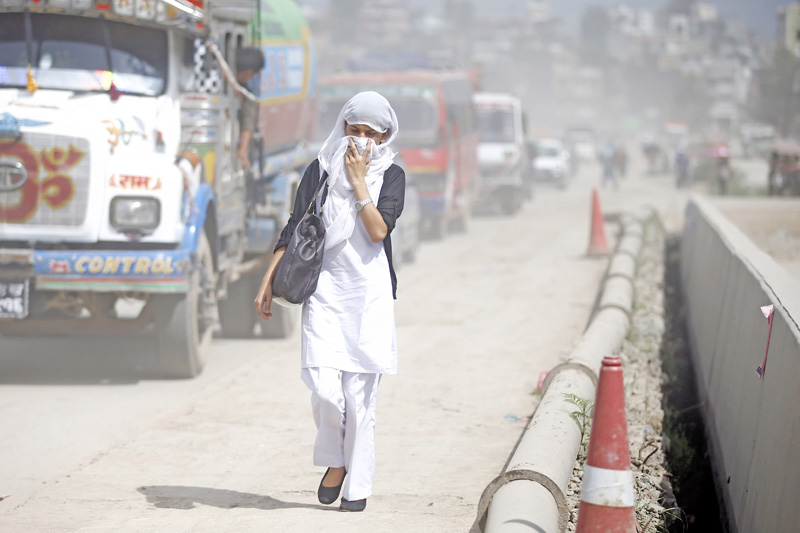Draft of national pollution control strategy finalised
Kathmandu, January 4
The Department of Environment has finalised the draft of National Pollution Control Strategy and Action Plan.
In December 2016, the department had collected feedback from stakeholders before it finalising the draft strategy by organising a validation workshop. The final draft of the strategy has been sent to Asian Development Bank for feedback.
“Once we receive the draft with ADB feedback, we will submit it to the Ministry of Environment and Population,” Mohan Dev Joshi, spokesperson for the department, told THT.
During feedback collection, stakeholders had expressed dissatisfaction with the government for overlooking the issue of pollution. Though the department has prepared the strategy in collaboration with International Union for Conservation of Nature and ADB, the government lacks proper pollution data.
The draft strategy proposes to establish Environment Protection and Climate Change Council to address the issues of environment protection and climate change. As per the draft, EPCCC will have the prime minister as chair of the council, environment and population minister as vice-chair and secretary at the ministry as member secretary. The council will have a total of 41 members.
Similarly, the draft also proposes forming Strategy and Action Plan Implementation Coordination Committee and Strategy and Action Plan Implementation Unit.
Besides setting up three air quality monitoring stations in Kathmandu, the government has no data on air, water, noise and visual pollution.
Five months after reviving air quality monitoring process in Kathmandu Valley, the department has set up three air quality monitoring stations in Kathmandu Valley and Dhulikhel. Though air pollution monitoring practice in Nepal began in 2002, no station was operational since 2009.
The Danish government had installed seven air quality stations in the Valley in 2002. Five of these stations were built in Machchegaun, Kirtipur, Patan, Putalisadak, and Bhaktapur, and two in Thamel.
After the stations were handed over to the government in 2008, the government transferred the onus of managing the stations to Environment and Public Health Organisation.
However, a misunderstanding between the government and ENPHO led to the closure of stations in 2009.






